Floating bridge: Big drops in vehicle and passenger numbers
- Published
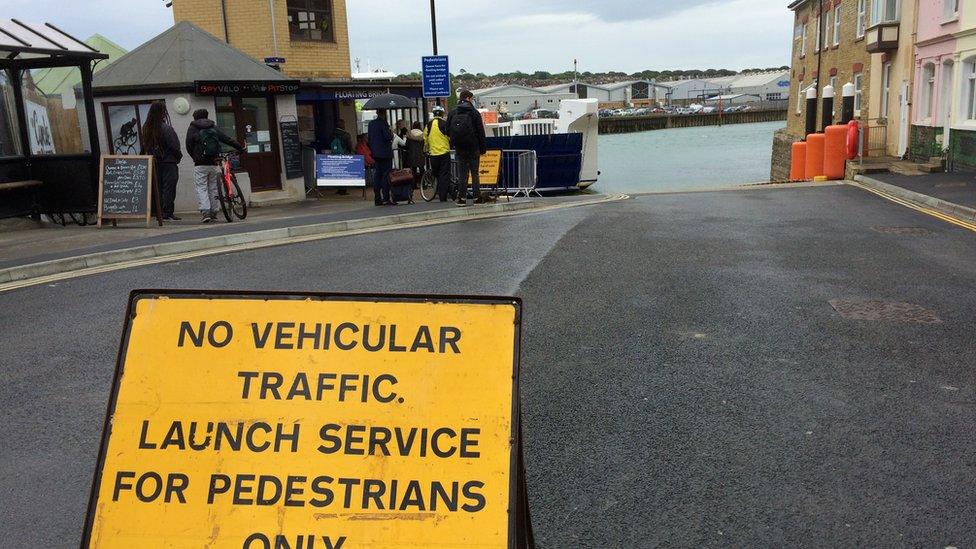
A launch is used to ferry foot passengers, while drivers face a lengthy road diversion, when the chain ferry is out of action
The number of vehicle journeys on the Isle of Wight's troubled chain ferry service has fallen by more than half in three years, figures show.
A new ferry has suffered a number of technical faults since it launched in May 2017.
Isle of Wight Council figures showed 134,000 fewer vehicle journeys in 2017-18 compared to 2015-16. Foot passenger numbers fell by more than 40%.
The council has insisted reliability will improve.
Floating Bridge Number 6 entered service in May 2017 but was immediately beset by problems.
There have been groundings, complaints about noise and damage to cars while a crew member was injured in the engine room in September.
Independent councillor Karl Love said residents had "given up" on the chain ferry.
"It's disgraceful. People don't have the confidence to use the floating bridge - they don't trust it. It's affected tourism, investment and the community's ability to interact."
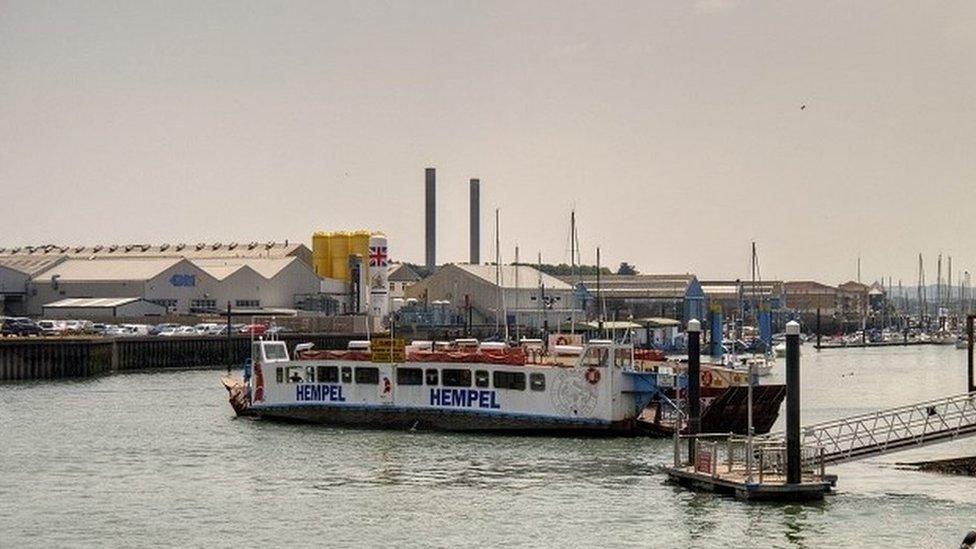
The new ferry replaced Floating Bridge Number 5 which had operated for 40 years
The council's usage figures showed 253,618 single car journeys were made between August 2015 and July 2016.
This fell to 145,226 in the following 12 months, although there was no vehicle service for the first five months of 2017 while the new ferry was installed.
However, the figure for August 2017 to July 2018 showed a further drop to 118,762 - a 53% drop in the three years.
While the chain ferry is out of action vehicles have to make a 12-mile (19km) round-trip by road.
A separate report from the Solent Local Enterprise Partnership LEP, external has revealed the project's cost has reached £5.93m, with remedial work adding £1.49m to the initial forecast.
Hiring a passenger launch when the ferry is out of service has also cost the council an additional £540,000.
The report looked at options including scrapping the vessel or selling it to be used on Lake Windermere but said that was "unlikely to be realistic".
The council has pledged the service "will improve".
Speaking at a council meeting in September, cabinet member for infrastructure and transport Ian Ward said the service had operated above 90% reliability since March.
"This is a reliable craft as it stands. All people hear is negativity, but otherwise it's doing pretty well."

Floating Bridge Number Six timeline:
The problems that have afflicted the Isle of Wight's £3.2m chain ferry
13 May 2017 - Vessel launched
14 May - Broke down
15 May - Service suspended by MCA
7 June - Ran aground
9 June - Ran aground for a second time
9 June - Council said it had cleared "silt build-up that caused the floating bridge to ground"
10 June - Ran aground a third time
13 June to 3 July - Taken out of service at low tide
30 June - Broke down due to electrical fault
21 July - Withdrawn from service at night due to noise levels
4 September - Withdrawn from service indefinitely
11 December - Service resumed as part of extended trial
2 February 2018 - Broken prow chain
26 September - Crew member injured in engine room
25 October - Snapped prow chain

- Published26 October 2018
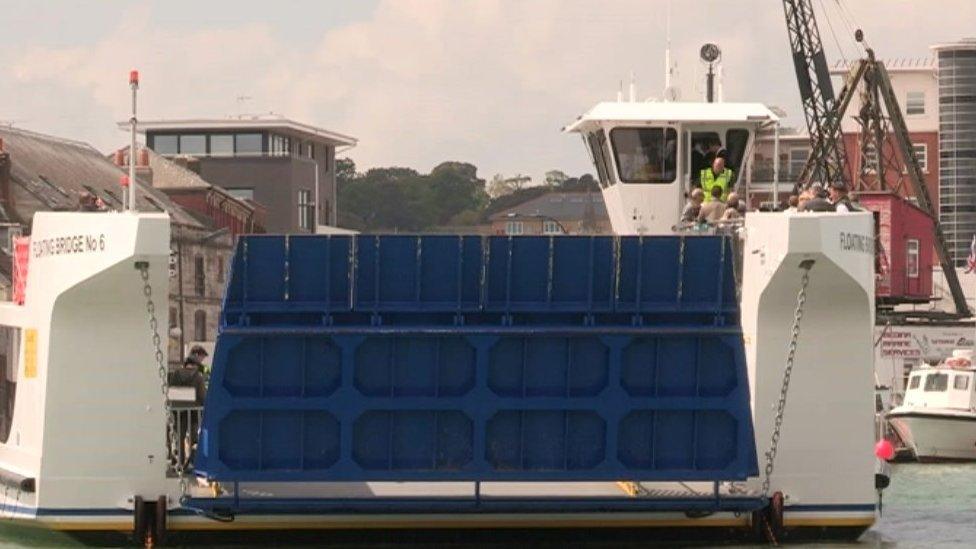
- Published26 September 2018

- Published7 February 2018
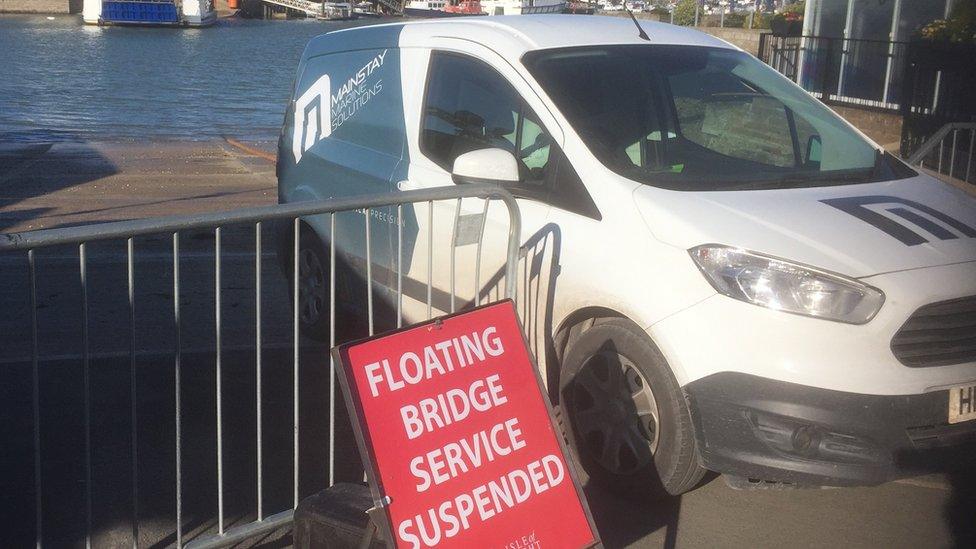
- Published3 February 2018
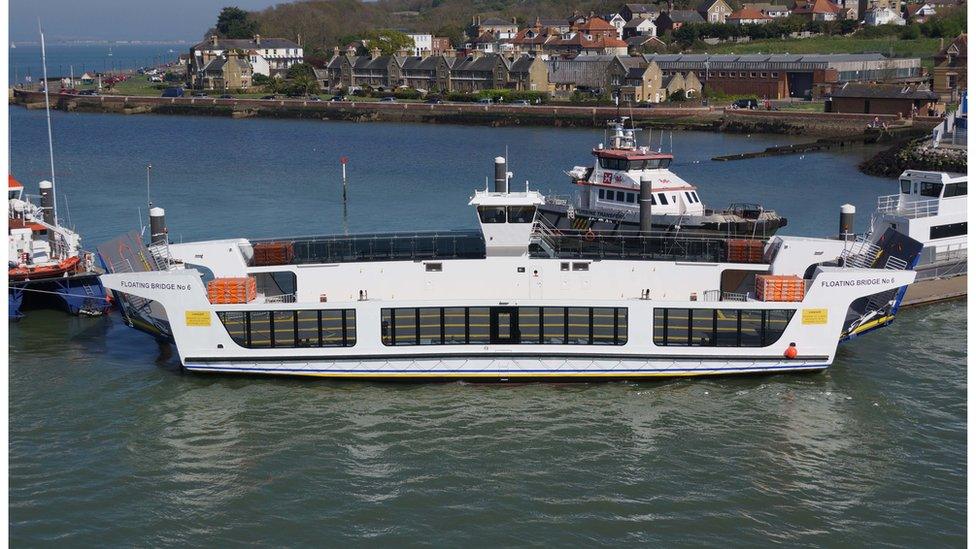
- Published30 December 2017

- Published26 October 2017

- Published31 August 2017
